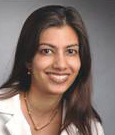Recent years have witnessed much heated debate about the benefits of breast cancer screening and optimal screening strategies. Unlike with mammography, no randomized data are available to determine whether screening with magnetic resonance imaging (MRI) reduces mortality from breast cancer. Therefore, modeling analyses are especially useful in assessing the utility and costs of MRI in select populations, such as women with a family history of breast cancer.
This issue of The ASCO Post presents an analysis by Saadatmand and colleagues, who incorporated data from a large prospective MRI screening study (MRISC) into a simulation model to evaluate alternative MRI screening strategies and assess cost per life-year gained relative to mammography alone among women with familial risk for breast cancer.
Relative Costs
Previous studies have shown that annual screening with MRI is cost-effective for women between the ages of 30 and 60 years who either carry a BRCA mutation or have a 50% chance of carrying such a mutation. Plevritis and colleagues reported that the cost per quality-adjusted life-year (QALY) gained by screening with MRI for women between the ages of
35 and 54 years was $55,420 for those with a known BRCA1 mutation and $130,625 for those with a BRCA2 mutation.1
In the presented study, screening with MRI and mammography for women with at least a 15% cumulative lifetime risk of breast cancer cost $134,932 per additional life-year. The authors did not report the results by QALY, but had they done so, the ratios would have been even greater. These figures are consistent with those reported by Teneja and colleagues, who found that for non–BRCA carriers, with an annual breast cancer prevalence of 2% or 1%, the incremental cost per additional QALY was $154,045 and $315,210, respectively.2
When compared to other lifesaving interventions, in terms of the cost per life-year saved, MRI screening for breast cancer is expensive. Indeed, the incremental cost per life-year gained for the least expensive MRI strategy assessed by the present study (alternating MRI and mammogram every year compared to annual mammography) was $212,183. While no absolute numbers exist, typical thresholds for reasonable value in the United States range from $50,000 to $100,000 per QALY gained. Indeed, the United Kingdom’s National Institute for Health and Care Excellence (NICE) uses £20,000 to £30,000 per QALY (roughly $30,000–$45,000/QALY) as its limit for approving coverage of new medical technologies.3
MRI Sensitivity Relative to Age
Curiously, the authors found that the percentage of cancers detected by MRI-only increased with increasing patient age. The relative benefits of MRI have been classically thought to be greater in younger women, who have denser breasts, which renders mammography less sensitive.
In the current study, however, only one of seven cancers found among women between the ages of 30 and 39 was detected by MRI only (14%), whereas for women between the ages of 40 and 49 and those between 50 and 59, the percentages of cancers detected by MRI only were 33% and 40%, respectively. Whether this finding is spurious due to the relatively small numbers of cancers detected in this prospective screening study or actually a real feature of MRI sensitivity needs to be explored in other clinical settings.
Improved Risk Estimation in the Future
The findings from the Saadatmand et al study also highlight the significant limitations of using cumulative lifetime risk as the primary mechanism for identifying which women should be considered eligible for MRI screening/surveillance. The observed number of breast cancer cases in the MRISC study on which the authors’ model is calibrated actually revealed a lower incidence of breast cancer in the group of women calculated to be at higher risk of having breast cancer (5.0 cancers found per 1,000 patient-years for women with a cumulative lifetime risk between 30% and 50%) vs the group of women with a calculated cumulative lifetime risk between 15% and 30% (6.9 cancers found per 1,000 patient-years).
There are inadequacies in our current methods of estimating cumulative lifetime risk. Furthermore, there is significant disparity in assessment of cumulative lifetime risk among risk models.4 Research should be focused on developing improved prediction models that incorporate family history, clinical risk factors, and results from testing of additional genes.
Ultimately, however, it is not the cumulative lifetime risk of breast cancer but criteria defining clinically meaningful risk of breast cancer that should be central to stratifying women for assessment of screening strategies. The risk of developing breast cancers using such criteria will need to be weighed against the specificity of imaging techniques to determine the optimal screening strategy. ■
Dr. Punglia is Assistant Professor of Radiation Oncology, Harvard Medical School, Department of Radiation Oncology and Center for Outcomes and Policy Research, Dana-Farber Cancer Institute, Boston. Dr. Stout is Assistant Professor, Department of Population Medicine, Harvard Medical School, and Harvard Pilgrim Health Care Institute, Boston.
Disclosure: Drs. Punglia and Stout reported no potential conflicts of interest.
References
1. Plevritis SK, Kurian AW, Sigal BM, et al: Cost-effectiveness of screening BRCA1/2 mutation carriers with breast magnetic resonance imaging. JAMA 295:2374-2384, 2006.
2. Taneja C, Edelsberg J, Weycker D, et al: Cost effectiveness of breast cancer screening with contrast-enhanced MRI in high-risk women. J Am Coll Radiol 6:171-179, 2009.
3. McCabe C, Claxton K, Culyer AJ: The NICE cost-effectiveness threshold: What it is and what that means. Pharmacoeconomics 26:733-744, 2008.
4. Ozanne EM, Drohan B, Bosinoff P, et al: Which risk model to use? Clinical implications of the ACS MRI screening guidelines. Cancer Epidemiol Biomarkers Prev 22:146-149, 2013.



